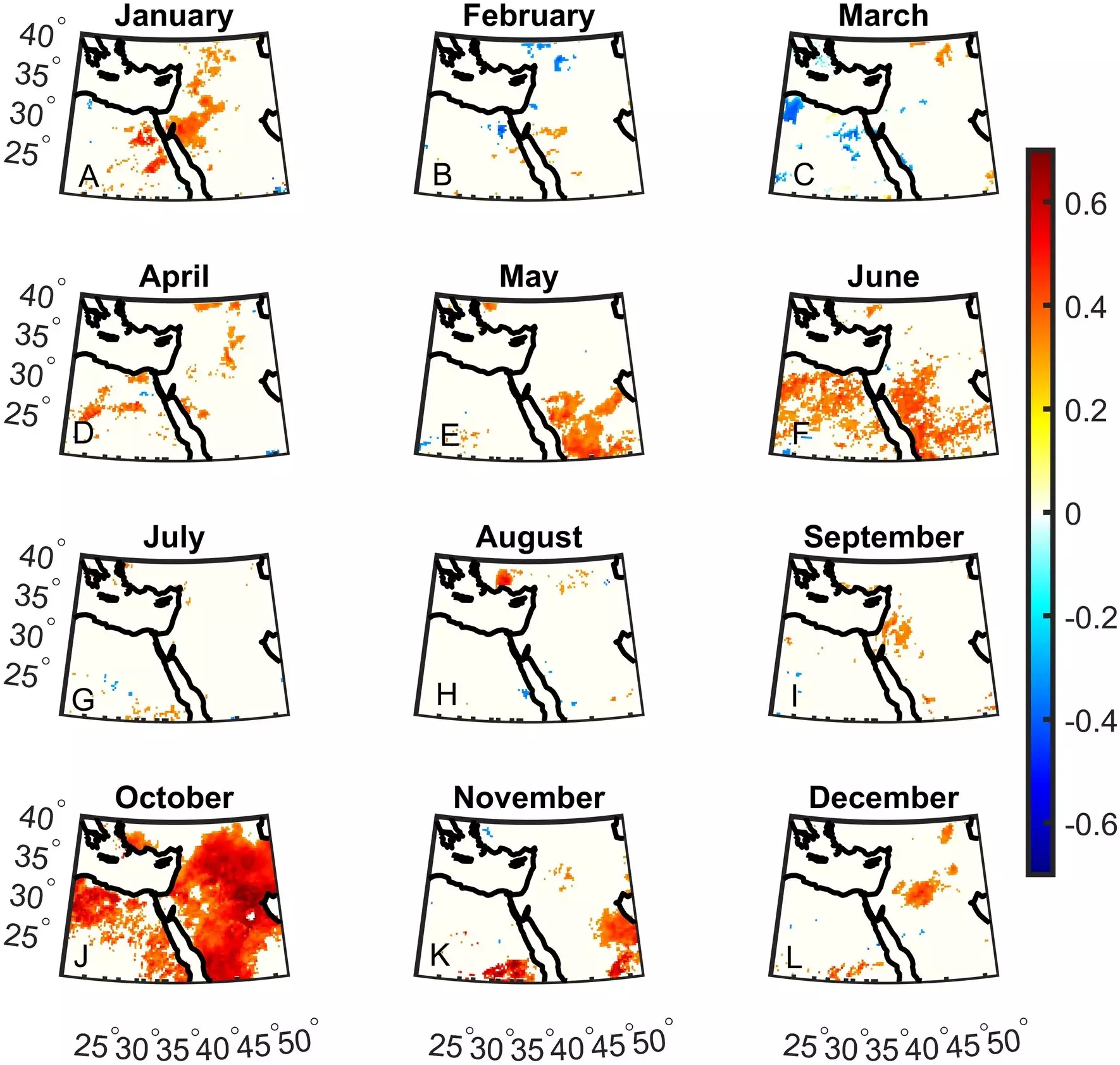A recent study conducted by Dr. Assaf Hochman and his team from the Institute of Earth Sciences at the Hebrew University of Jerusalem has shed light on the complex dynamics of sub-seasonal precipitation anomalies in the Middle East. The study, published in the journal Scientific Reports, unveils significant correlations between these anomalies and key climate indices, offering valuable insights into the predictability of rainfall patterns.
The research holds particular promise for two significant areas heavily affected in the Middle East. By understanding the evolving climate patterns, policymakers and stakeholders involved in managing water resources can gain crucial information for planning and implementing effective water conservation and distribution strategies. This knowledge also plays a vital role in addressing the region’s water scarcity concerns, which are becoming increasingly pressing.
Agriculture in the Middle East heavily relies on precipitation for irrigation purposes. The study’s findings on sub-seasonal precipitation anomalies and their correlation with climate indices can assist farmers and agricultural policymakers in anticipating and adapting to changing rainfall patterns. This knowledge is particularly important for crop planning and mitigating the potential impacts of extreme weather events on agriculture. Ultimately, it enhances the resilience of the region’s agricultural practices.
The research delves into the intricate relationships between climate indices, such as the Indian Ocean Dipole Mode Index (IODMI) and the West Tropical Indian Ocean Index (WTIOI), and precipitation variability in the Middle East. By carefully analyzing data from the month of October, researchers discovered strong correlations, with coefficients around 0.7, persisting up to a two-month lag period.
Interestingly, the study highlights a significant upward trend of approximately 0.4°C in both the IODMI and WTIOI over the past four decades. Such a trend underscores the evolving climate patterns in the Indian Ocean and intensifies their impact on precipitation dynamics in the Middle East. These findings indicate a continued trend into the twenty-first century, thereby potentially leading to significant regional consequences.
The study also identifies substantial correlations between the IODMI, WTIOI, and maximum daily precipitation, emphasizing their role in extreme rainfall events. By attributing much of October’s precipitation variability to Indian Ocean sea surface temperature anomalies, the research elucidates how these temperature fluctuations influence the Indian Ocean’s Walker circulation, which in turn shapes regional precipitation patterns.
Dr. Assaf Hochman, the lead researcher of the study, stressed the importance of understanding the intricate ocean-atmosphere interactions and their implications for Middle Eastern climate variability. By elucidating the connections between climate indices and sub-seasonal precipitation anomalies, the research paves the way for improved prediction and adaptation strategies.
The implications of this study extend beyond academic circles. The findings offer valuable insights for policymakers, meteorologists, and stakeholders concerned with water resource management, agriculture, and disaster preparedness in the Middle East. With the growing challenges of climate change and its impacts on the region, this research provides a solid foundation for informed decision-making and proactive measures to mitigate potential risks.
Dr. Assaf Hochman’s study sheds light on the intricate dynamics of sub-seasonal precipitation anomalies in the Middle East. The research highlights the connections between climate indices and rainfall patterns, providing valuable information for water resource management, agriculture, and disaster preparedness in the region. By understanding and predicting these patterns, policymakers and stakeholders can develop effective strategies to address water scarcity concerns and enhance the resilience of the Middle East’s vital agricultural sector.



Leave a Reply